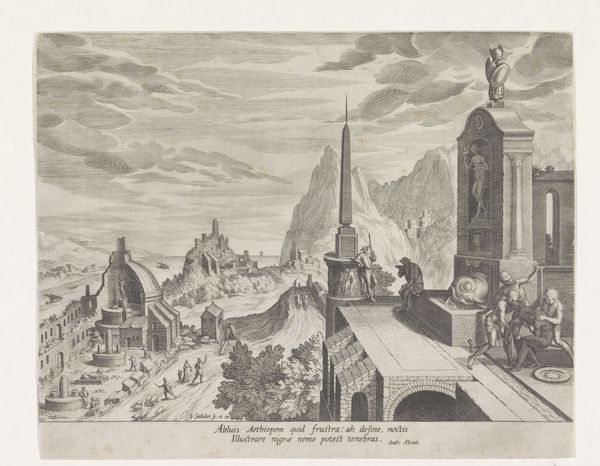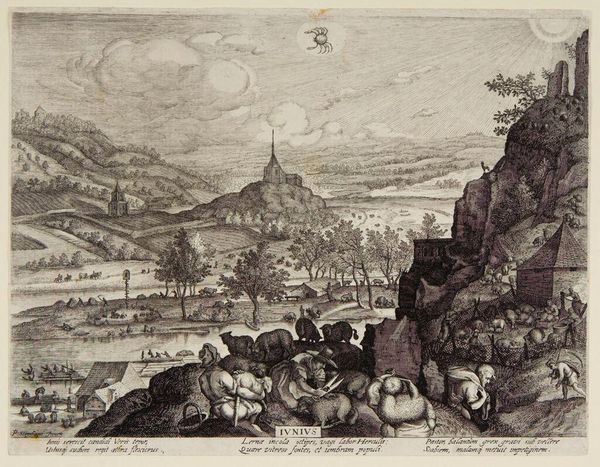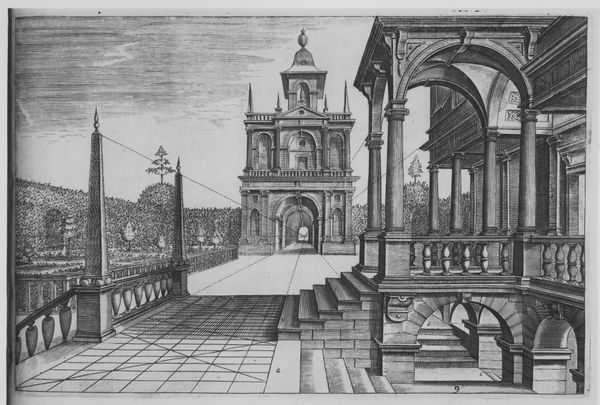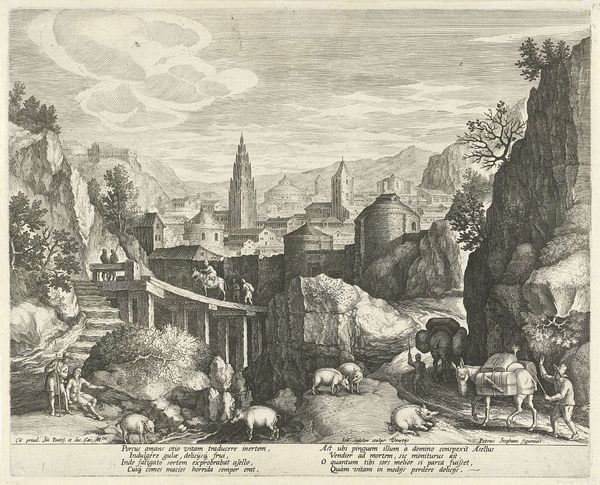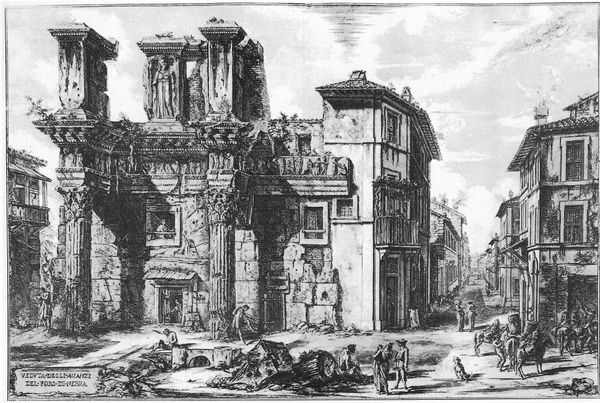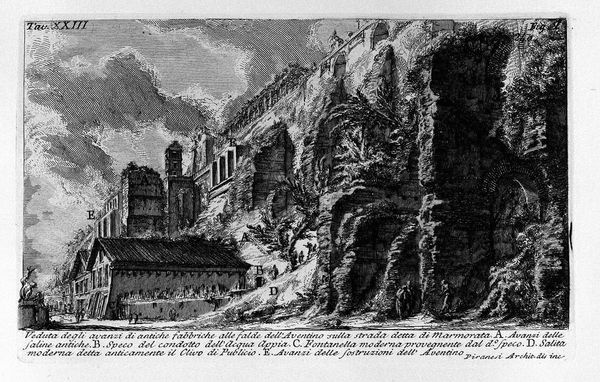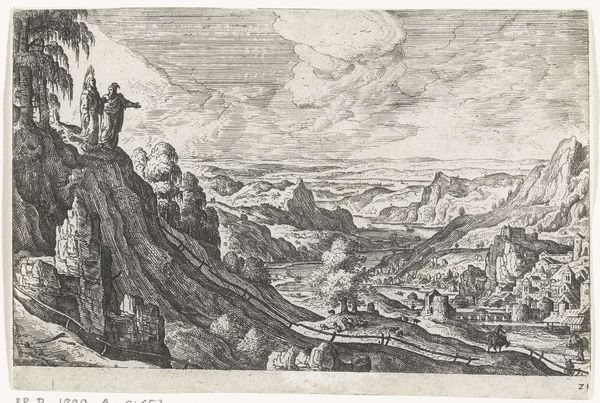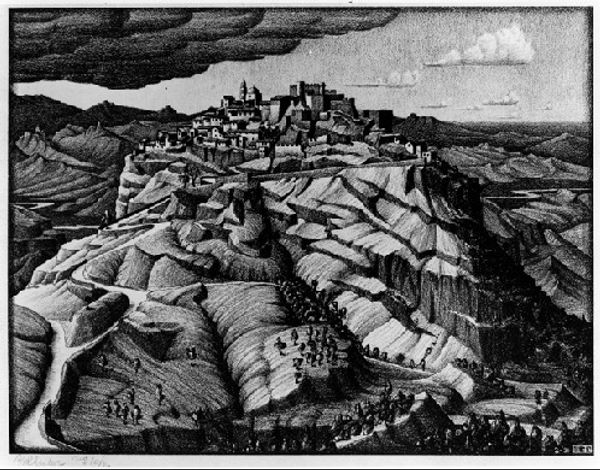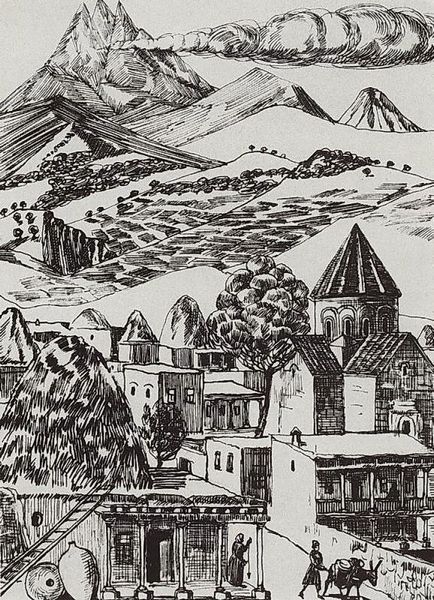
drawing, print, etching, engraving, architecture
#
drawing
# print
#
pen illustration
#
etching
#
landscape
#
mannerism
#
engraving
#
architecture
#
building
Dimensions: Sheet: 8 7/16 × 10 9/16 in. (21.5 × 26.8 cm)
Copyright: Public Domain
Curator: At first glance, there’s a sort of dreamlike theatricality to this image. A stage set with figures posed almost melodramatically against a craggy backdrop. Editor: We’re looking at "Rocky Landscape with Antique Buildings", an engraving and etching created sometime between 1568 and 1600 by Johann Sadeler I. The print, currently held at the Metropolitan Museum of Art, displays a complex landscape teeming with classical ruins. Curator: The perspective is definitely playing tricks on the eye. The juxtaposition of scale is very jarring. And look at the starkness of line, rendered through etching—the contrast evokes a sense of unease, an impending drama about to unfold in the shadow of these structures. Editor: These “ruins”, though, speak to a larger cultural phenomenon, a nostalgic longing for a lost Classical era which permeated sixteenth-century European society. Prints like this circulated widely, fostering a shared visual vocabulary among artists and patrons alike, defining and re-defining ideas of civic virtue. The Mannerist style allows for the combination of fantasy with familiar iconographies. Curator: That’s an astute point. Yet, while acknowledging the historical context, can't we also examine how the artist has constructed space and form, how the interplay of light and shadow sculpts a world? The almost obsessive rendering of textures, of the stone, of the human musculature, contributes to the image's captivating dynamism, its tension. Editor: Absolutely, but that dynamism arises, in part, from the historical moment. Europe in flux—religious reformation, nascent scientific discovery, imperial expansion, so much of this image reveals both admiration for a glorious past and a reflection on the turbulent present, suggesting anxiety towards progress and societal change. Curator: Still, beyond all socio-historical interpretations, it’s an aesthetic arrangement above all else. An aesthetic experience relying solely on visual cues that build tension through shape, composition and detail. It stands outside of a timeline. Editor: Perhaps, yet timelines are made through human actions and our human impulse to memorialize. So, in considering its original context, perhaps this image is just as revealing about then as it may be evocative for us now.
Comments
No comments
Be the first to comment and join the conversation on the ultimate creative platform.

